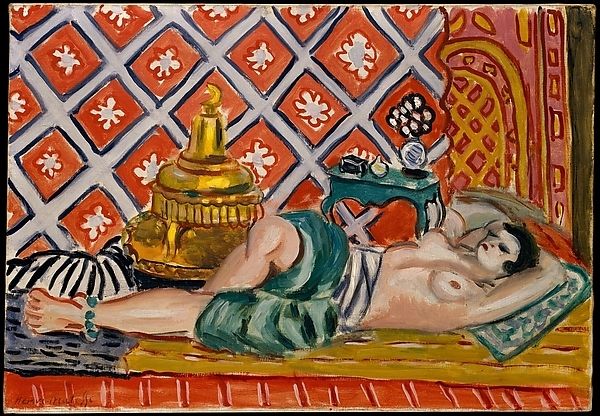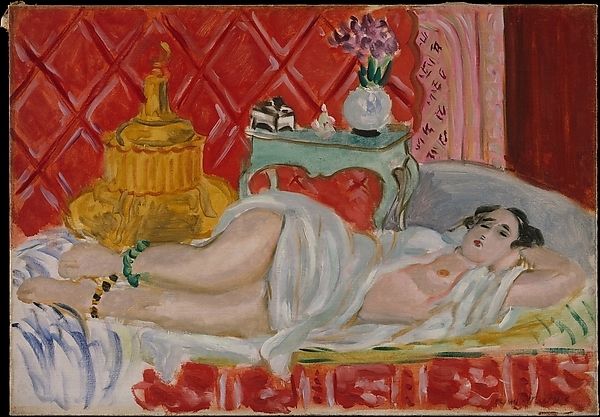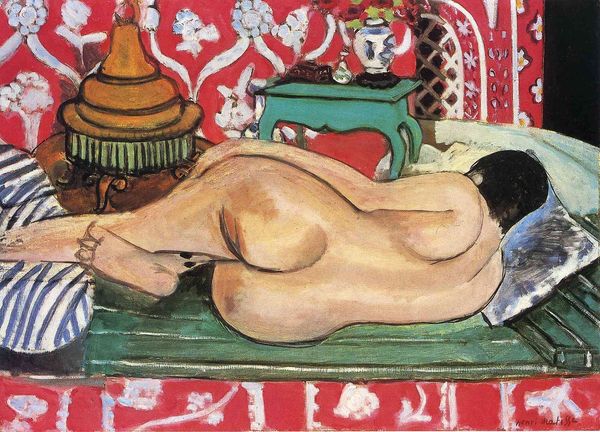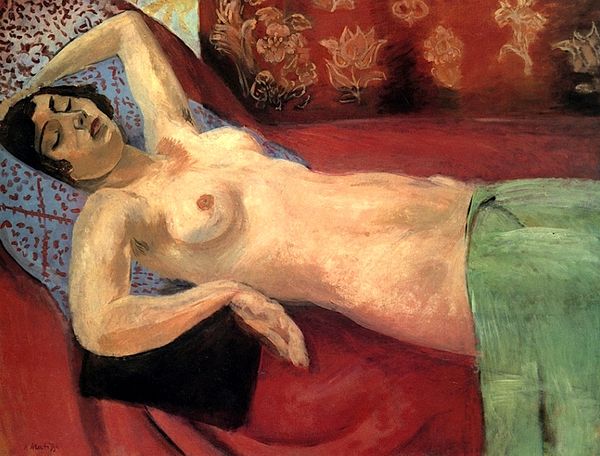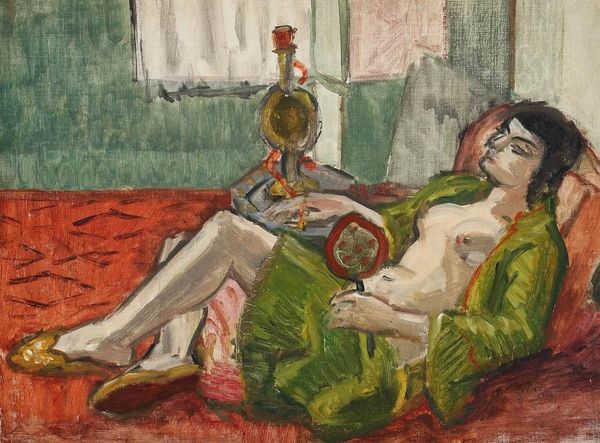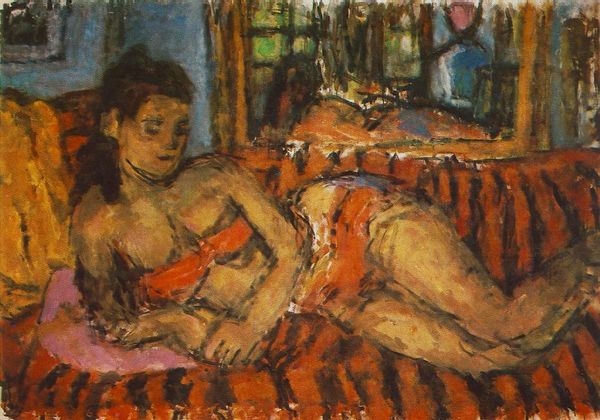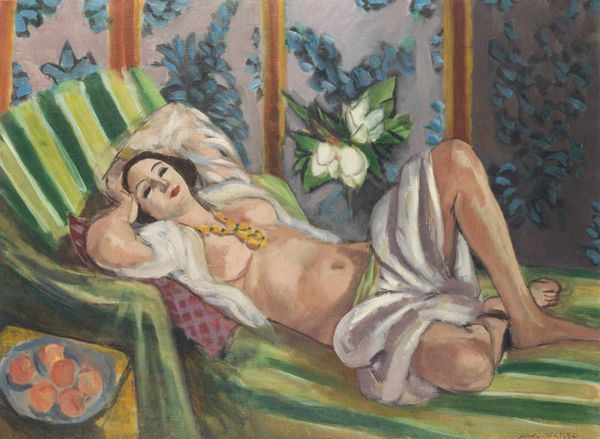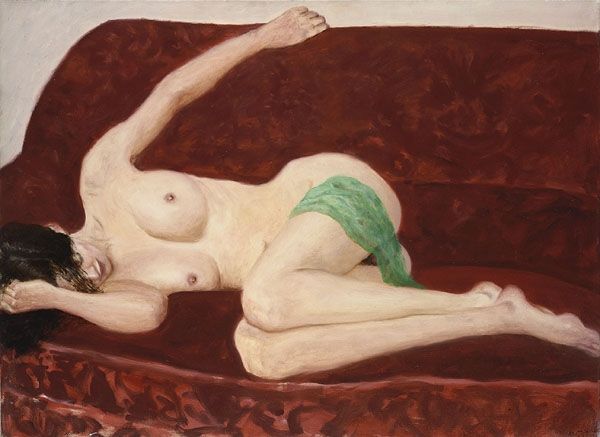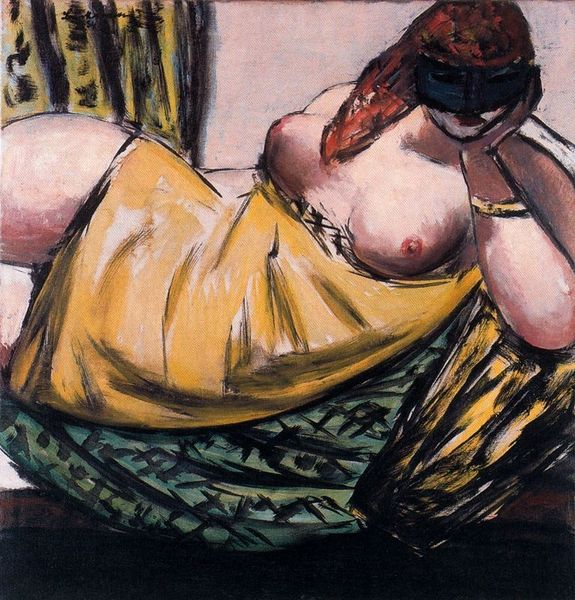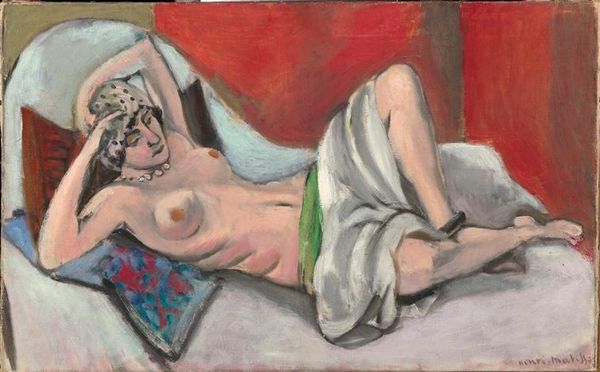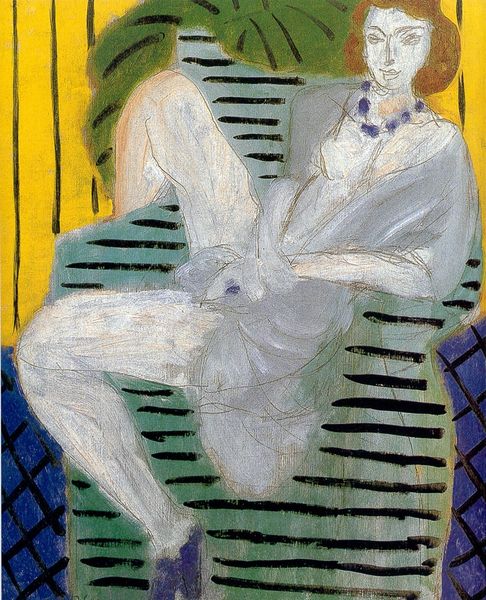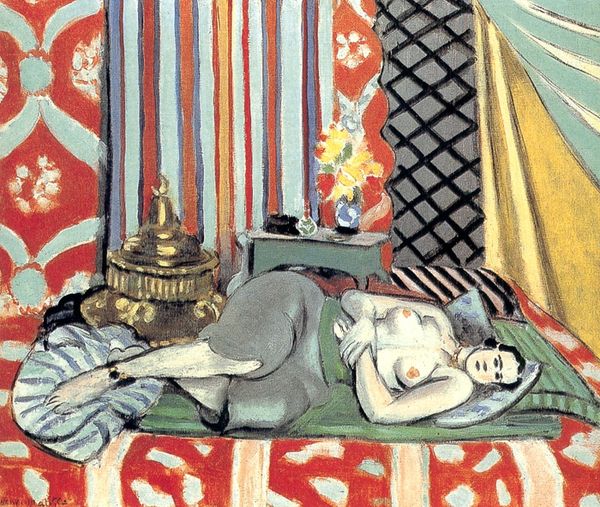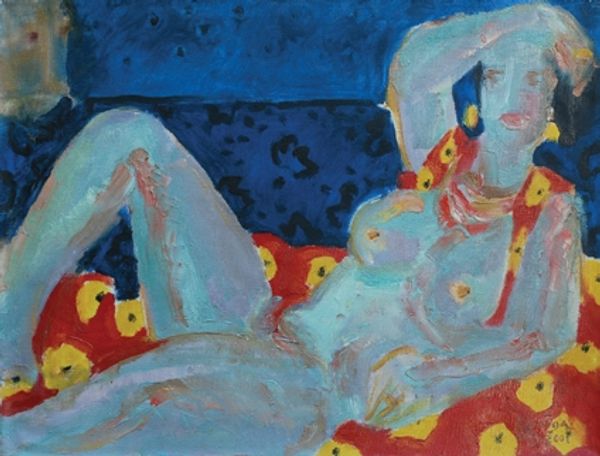
Copyright: Henri Matisse,Fair Use
Curator: I am immediately struck by the sense of dreamy languor in Matisse's "Odalisque with Green Scarf." It’s like stepping into a haze of color and sensuality, isn’t it? Editor: Indeed. This piece, from 1926, is part of Matisse's extensive "odalisque" series, reflecting Orientalist tropes popular during the colonial era. It’s crucial to examine how he situates the female body within this loaded historical context. Curator: I find myself pulled in by the interplay of patterns—those vibrant red and white stripes in the background, contrasting with the blue and white patterned cushion. There’s a certain joyous energy in it, even though the pose itself is quite relaxed. The composition practically vibrates with color. Editor: It's important to acknowledge that the vibrant colors and exotic imagery can distract from a critical understanding of the power dynamics at play. Who gets to depict whom and under what conditions is the conversation we need to foster. What's framed as artistic license often rests upon existing power imbalances. Curator: True, and one cannot help but observe the woman as subject versus a human being. But speaking more generally about technique—Matisse has such a beautiful, confident way with his brushstrokes; so loose and expressive. He seems to capture the essence of a form rather than painstakingly detailing every single aspect. Editor: These loose brushstrokes certainly align with the broader post-Impressionist and Fauvist movements’ challenges to academic conventions. And his earlier works offer more direct depictions of female nudes; "Odalisque with Green Scarf," with its orientalist fantasy and flattening of the female figure, signals both complicity and commentary, if you want my opinion. Curator: Fair enough. It’s such a visual treat, even as there’s an underlying element of… unease is too strong of a word, perhaps, but maybe tension? It does hold the viewer in thrall with its color-drenched surface. It's complex and certainly has some grit in it. Editor: Precisely. By considering this piece within its complex socio-political landscape, and how its presentation contributes to stereotypes surrounding the female form, as well as questions of colonial authority, the art can be even more interesting, meaningful, and—if that's not too ambitious—educational. Curator: Thank you. Considering your views and insight only added layers of perspective. I feel that looking at "Odalisque with Green Scarf" through that lens really encourages a much fuller appreciation of not just the art itself, but its far wider implications.
Comments
No comments
Be the first to comment and join the conversation on the ultimate creative platform.
